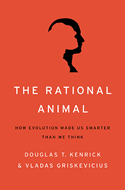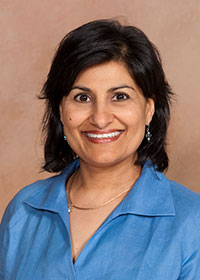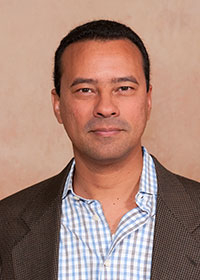Winter 2013
Letter from the Director
"There are two kinds of (research) writers: those that make you think, and those that make you wonder."
- Brian Aldiss, a noted English writer
The Institute for Research in Marketing would like to recognize two of our leading marketing faculty and scholars, Associate Professors Vladas Griskevicius and Carlos Torelli, who have accomplished both goals: making us think and making us wonder, with their recent books.
Griskevicius' THE RATIONAL ANIMAL: How Evolution Made Us Smarter Than We Think looks at how modern choices regarding everything from money to marriage to cars are influenced by deep-seated ancestral needs, albeit rarely in obvious or conscious ways. Watch a short video on the book now.
Some reviews by noted and influential authors and researchers:
"Do you want to understand all kinds of human judgment errors that seemed inexplicable before? And do you want to be able to profit handsomely from that new and deep form of understanding? Then don’t miss the profound insights of this groundbreaking book."
--Robert B. Cialdini, author of Influence: The Psychology of Persuasion
"The Rational Animal is so persuasive that it could convince an ardent Wall Street economist to throw away his copy of Adam Smith's The Wealth of Nations and replace it with Charles Darwin's The Origin of Species."
--Noah J. Goldstein, UCLA Anderson School of Management, and coauthor of Yes! 50 Scientifically Proven Ways to be Persuasive
Griskevicius has also published more than 40 articles in top business and psychology journals examining sustainability, green marketing, motivation, emotion, social influence, social norms, and g conspicuous consumption. He has received numerous awards for his teaching and research here at The Carlson School Department of Marketing.
Torelli's Globalization, Culture, and Branding: How to Leverage Cultural Equity for Building Iconic Brands in the Era of Globalization explores globalization and the complex marketplace it presents for marketers to navigate, bringing dramatic changes to both the supply (i.e., brands that are offered) and demand (i.e., consumers' values and desires) sides of markets. A proliferation of global brands from developed and emerging economies brings diverse cultures to a consumer population that is also growing culturally diverse.
The book illustrates how marketers can take advantage of these seismic changes and leverage cultural equity for building iconic brands in the era of globalization. Drawing from novel theoretical insights into social psychology, cultural psychology, and marketing, Globalization, Culture, and Branding provides guidelines for imbuing brands with culturally symbolic meanings that can create deep psychological bonds with multi-cultural consumers.
Torelli is also a former marketing vice president for Citibank in Venezuela and Turkey. His research work has been published in several books and in top journals in psychology and consumer behavior, including the Journal of Marketing, the Journal of Personality and Social Psychology, the Journal of Consumer Research, the Journal of Consumer Psychology (where one of his articles is ranked in the "top 20 most cited" articles in the last five years), Social Cognition, and Social and Personality Psychology Compass. His research has been featured in multiple mass media outlets such as NPR, WCCO-TV, KMSP-TV, Star Tribune, Psychology Today, Yahoo Finance, and Yahoo Lifestyle.
Mission
Our board is our strength and provides a conduit between its corporate research needs and our faculty. It is a prestigious group of research and marketing executives from Fortune 500 corporations across many of the major industries. Some of these corporations include Augeo Affinity Marketing, Best Buy, Cargill, Ecolab, G&K Services, General Mills, Polaris Industries, The Schwan Food Company, Target, United Healthcare, Wells Fargo, and 3M Corporation.
Our Vision and Mission for the Institute Board continues to be the following:
The Institute for Research in Marketing leverages the expertise of the Carlson School's world-class marketing faculty and an advisory board of practitioners from leading corporations to foster rigorous and relevant research that improves the science and practice of marketing.
Through its many initiatives, the Institute provides a forum for dialogue among marketing scholars, industry practitioners, policymakers, and students.
Fostering joint research projects that deliver value to our practitioner Institute partners and our faculty should be our long-term goal.
Our marketing professors continue to be extremely productive in their research, which is reported on worldwide with the help of the Institute. This coverage enhances the brand image of each faculty member and at the same time, the name of the Carlson School of Management and the Marketing Department.
This faculty research is regularly updated on our Institute website and is accessible on the publications page. Another great website feature is the expertise page, which is categorized by topical areas, making it easier to search for faculty expertise.
| ABC News Bloomberg Businessweek CBS Minnesota Chicago Tribune Daily Mail Forbes (globally) Harvard Business Review Health magazine Huffington Post (globally) Indianapolis Star Kare-11 |
Men's Health Miami Herald Minn Post Minnesota Public Radio National Public Radio NBC News NY Daily News Psychological Science Psychology Today Scientific American Slate |
Smithsonian Star Tribune The Atlantic The New York Times TIME TODAY Show U.S. News & World Report US News USA Today Wall Street Journal (globally) Yahoo! (globally) |
| Business Insider Business Standard Card Hub Cognitive Neuroscience Society ECRI Institute Entrepreneur (India) |
La Lettura Metro India Psych Central Psychologies Science Codex Science Newsline |
The Korea Times The Globe and Mail The Star (Toronto) The Sydney Morning Herald The Telegraph (UK) The Times of India |
Our faculty has also been recognized in the past six months with the following awards:
- Assistant Professor Yi Zhu received the 3M Non-Tenured Faculty Grant which recognizes outstanding new faculty for the quality and pertinence of research and is intended to help them achieve tenure, remain in teaching positions and conduct research. He also received the Carlson School Dean’s Small Grant
- Professor Kathleen Vohs was awarded the Annaliese Maier Research Award, given by the Humboldt Foundation in Germany. It is a collaboration award to promote the internationalization of the humanities and social sciences in Germany.
- Professor Joan Meyers-Levy was awarded the Journal of Consumer Research Outstanding Reviewer Award for producing constructive, benevolent, and punctual reviews.
- Associate Professor Vladas Griskevicius was awarded Carlson School’s Annual Faculty Research Award and Service Award.
- Assistant Professor Joseph Redden received Carlson School’s Annual Faculty Research Award, Teaching Award, and Service Award.
- Professor Deborah R. John received Carlson School’s Annual Faculty Teaching Award.
- Associate Dean Mark Bergen received Carlson School’s Annual Faculty Teaching Award.
- Professor Akshay Rao Received Carlson School’s Annual Faculty Teaching Award and Service Award.
In closing, 2013 has been a highly productive year for our faculty and our board.
Thank you to all of our Institute Board members for their dedication, continued support, and engagement with our faculty. Thank you also to Marketing Department Chair Barbara Loken and Associate Dean George John for their on-going support of the Institute. Continued best wishes in your marketing and research success in 2014!!
Best wishes,
Wayne G. Mueller
Director, Institute for Research in Marketing
Highlighted Media Coverage of Faculty Research
The Effects of Search Advertising
Yi Zhu |
EDUCATIONPhD, 2013Business Administration (Marketing) MA, 2004Economics MA, 2002Management BE, 1998Industry Engineering |
Why businesses should be integrating their advertising platforms
Assistant Professor Yi Zhu knew he wanted to be at the Carlson School of Management. He'd heard the Carlson School name a lot, and had even studied its faculty papers in class as a doctoral student at the University of Southern California.
"You get the impression that Carlson is a very good school," Zhu said. "That the faculty here, especially the marketing group, does very impressive research. It's not a secondary school that people don't know. When you say Carlson, people know."
Another huge motivation to join the Carlson School was its strong connection with the many extraordinary companies in the Twin Cities. Developing connections with these companies is a priority for Zhu because he feels the best research ideas come from real situations. He values talking with managers, understanding their questions, and getting some exciting new ideas or data sets to work with.
Right now Zhu's research is focusing on two areas. The first is media bias. In China, every media outlet and TV station says the same thing. But here, Fox News and MSNBC are different.
"They say different things about the same subject matter," he said. "So which one do you believe, how do you know which one is correct?"
One of Zhu's ongoing projects is attempting to understand the act of selective reporting, meaning ignoring certain relevant facts in order to create a dramatically different impression to consumers. He's finding that competition can make the media more selective, become less informative, and provide less content in an article. This provides an alternative explanation to the observation that many major news outlets have reduced their news content since the booming of online and mobile media.
But, right now, Zhu's main research focus is e-commerce, particularly real-world phenomena about search advertising and how it can be linked with business activities. Search advertising is a way of placing online ads on websites that display results from search engine inquiries and it has a lot of implications for real businesses.
Zhu's research is trying to help firms better understand this new advertising format, how they can make better use of it to improve returns and how they can optimally allocate their budget. One of his forthcoming articles in Management Science studies the connection between traditional advertising and newer options like search advertising.
For example, if people see an ad about Fidelity, are they more likely to search Google using the generic keywords "financial service company" or the branded keyword "Fidelity?" To answer that question, the researchers linked two data sets. The first data set was from Kantar Media, which collects detailed information about TV ads. The researchers matched that data to another set where they collected adult online search activities from Google. So if there was an ad shown on TV, they could check to see whether people searched more, and what kind of keyword was used on Google.
Zhu and his fellow authors developed a new mining-query technique to identify a set of branded and generic financial services. The team devised a method to examine 35 million online searches and identify those that included generic financial services keywords, as opposed to simply brand names.
This research found that TV advertising has two effects. It increases searches in general, but it also has significant impact on consumers' keyword choice. So if there is a Fidelity ad on TV, there's going to be more searches about Fidelity on Google. That provides a lot of implications for advertisers and media companies. Marketers need to account for these effects when setting TV and search advertising budgets. The moment a TV ad starts, the company may want to buy more brand keywords on Google, which are less expensive than generic keywords.
This also highlights the importance for companies to integrate advertising campaigns across these two platforms. Right now, there is a separation; many companies have different agencies for TV and online advertising. There's a huge market need to synchronize these two types of campaigns. In elasticity terms, this research found the effect of TV advertising on consumers' choice of branded keywords is about as large as its effect on sales.
Zhu is reminded of a famous quote: "Half the money I spend on advertising is wasted; the trouble is I don't know which half." He suggests firms think carefully when they measure the effectiveness of TV advertising -- they should take into account revenue from other advertising campaigns. The money they think they've wasted maybe simply transferred consumers' activities online.
"I guess this is the part I like best. You find the real questions and you do the rigorous analysis, and you find the cool result," Zhu said. "You have a real impact to this field, to this industry. You feel your research can help mangers better understand phenomena, to help them increase their revenue. That's the part I find the most rewarding, the most enjoyable."
Moment of 'Truth'
Barbara Loken |
EDUCATIONPhD, 1981Social Psychology MA, 1976Psychology BA, 1973Psychology |
Tobacco is fertile ground for marketing research
In October, Professor Barbara Loken was flown to Washington, D.C. to be part of an expert evaluation panel to look at "The Truth" tobacco campaign. The Truth campaign was directed towards kids and aired for many years, but stopped its TV ads a few years ago. Tobacco rates dropped substantially since the beginning of the campaign, and now the initiation rate of tobacco is at about 8 percent among preteens and teens. But the fear is that it is on its way back up. So the American Legacy Foundation, the creators of The Truth, want to initiate another campaign.
"They wanted us -- a group of about 10 -- to evaluate their proposal for the new campaign," Loken said. "What the methodology should be to evaluate it, what the message should be, and what kind of data they should collect to make these kinds of decisions."
Continuing her own research in health promotion, Loken is currently working with colleagues in psychology and the medical school to understand how both smokers and non-smokers can be educated about the ingredients of tobacco products. Their research team hired a brand firm to develop a poster that simplifies a lot of the information about ingredients in smokeless tobacco products. That information focuses on two types of ingredients that many people don't realize have different health consequences: nicotine on the one hand and toxicity components, the cancer-causing chemicals in cigarettes, on the other. Some people believe that nicotine is what causes cancer, but it's actually just what gets someone hooked.
Some of the researchers' pilot work looks at whether or not smokers, as well as non-smokers, can understand information about nicotine and toxicity components and make knowledgeable judgments. The Food and Drug Administration has a strong initiative to educate consumers about tobacco ingredients. Consumers aren't going to read tables upon tables of data; they have trouble absorbing so much information. So Loken and her colleagues' goal is to find the simplest and best way to convey that information.
"We're trying to develop a relatively simple poster style which actually shows pictures of brands of smokeless tobacco," she said. "Last year at the state fair, our colleagues showed it to people at a booth from the medical school, and people responded positively to it."
So far the research is specific to smokeless tobacco, but they are finding that even smokers who are particularly resistant to the information do respond more to certain cues. For example, if they're given feedback that they have looked at the information carefully and understood it, they're more likely to then pay closer attention to the poster. Although it's still too early to say much about the possible implications for the marketing community at large, there could be some online formats that are more conducive to presenting consumers with educational information that targets resistant populations.
Loken also has recently been working with a former doctoral student, Dr. Nelson Amaral, on the topic of counterfeiting luxury brands. They’re looking into whether counterfeiting has a negative influence on the perceptions of the genuine luxury brand. Another current doctoral student, Jennifer Stoner, has introduced Loken to the area of how naming a product can change the way consumers think about it. They found that when consumers chose a name for a product, they were more likely to anthropomorphize or view the product as human-like, than when the experimenters named the product.
"I love several things about research," Loken said. "One of the things I enjoy is the collaboration process. Doctoral students have a certain energy that they bring to the research. And when I collaborate on health research, I really enjoy my colleagues from different disciplines and their perspectives on some of the applied issues relating to health."
Over the past decade, in addition to empirical research, Loken has moved toward performing integrative literature reviews of different topics. With Marketing Department colleagues, she's reviewed the literature on brand extension and brand dilution. With colleagues in health, she's reviewed the literature on mass media campaigns. And for the National Institute of Health, she reviewed all research on the effects of media in reducing and increasing tobacco use.
"A wonderful benefit from those projects is that they give me the broader picture of what's going on in those areas," Loken said. "And I also just love the synthesis process of taking all of the research findings and integrating them in a meaningful manner. It's a highly rewarding process."
Consumers Use of Brands
Rohini Ahluwalia |
EDUCATIONPhD, 1996Marketing MBA, 1988Clarion University of Pennsylvania BA, 1986Economics |
How feelings of exclusion and anxiety affect purchasing decisions
Over the past decade, Professor Rohini Ahluwalia's work has focused on branding issues, including brand loyalty and brand extensions. She's studied how to manage brand equity and image in global markets, including the issues that managers need to keep in mind. But given her focus on consumer behavior, she also examines how consumers use brands in their lives, in particular, to manage their needs. One of her recently published papers in the Journal of Consumer Research discusses how consumers use brands to meet their need to belong.
"People have a very strong innate desire to belong. We want social connection, we want to feel part of a group," Ahluwalia said. "That's a very important need for most of us and brands can sometimes help in fulfilling this need in consumers."
Past research has looked at what people do when they feel this need. Typically it found that people gravitate toward brands that symbolize the group they want to belong to, which is why people are attracted to the most popular brands associated with that group. For example, Nike symbolizes athletes, and therefore if people want to feel accepted by athletes, they start using Nike. But Ahluwalia and her co-authors looked at it differently. While it may seem counter-intuitive, they suggest that many times when people want to belong to a social group, they try to differentiate themselves, instead of going with the most popular brand for the group. Whether they differentiate or blend in depends mostly on the person’s self-esteem. When people have high self-esteem and feel socially excluded (and hence a heightened need to belong), they are likely to reaffirm their belongingness by gravitating towards the symbolic mainstream brand. But when people have lower levels of self-esteem, they not only have a high need to belong, but are constantly thinking about how they fit in and how people are treating them, and hence, use brands very differently to meet these needs.
The research found that when people have lower self-esteem, there is a high level of fear of rejection, which is why they don't necessarily want to go to the most popular brand, which says, "I fit in." Instead, they'll look at the different types of athletes. They'll try to find a brand that is more strongly associated with a subgroup. That is called horizontal differentiation. Horizontal differentiation has nothing to do with prestige or being better. It's just about being different in terms of the image it signals. Nike might be more of the mainstream brand, while Converse might be a little more differentiated. So when people feel social exclusion, they tend to use more of those types of brands.
Interestingly, Ahluwalia and colleagues find that even when people with a lower self-esteem feel socially included in a group, they still want to differentiate. They want to make sure their position in the group is secure. And a way to do that is by being superior to the group. They try to differentiate when they're socially included by choosing brands that are vertically differentiated, or that signal status. For example, instead of wearing a Nike or Converse shirt, someone might wear a Polo shirt. They use these status-oriented, luxury brands to signal superiority.
"There are two ways in which consumers can use brands to differentiate themselves from a social group -- horizontally vs. vertically," Ahluwalia said. "Part of our contribution is proposing this distinction and showing that even when consumers differentiate, it could be with a view to strengthen their belongingness to the group."
From a consumer perspective, that gives the researchers a better understanding of how consumers use brands. But from a marketer perspective, it also shows how the people who buy mainstream brands may be different from those who are more likely to buy luxury or horizontally differentiated brands. This helps companies figure out what kind of appeals they want to use.
In another branding study, Ahluwalia and her co-authors examined people's attachment styles, or the ways in which people relate to others. Essentially there are two dimensions of attachment styles. The anxious attachment style deals with people's views of themselves, the extent to which they feel worthy of relationships. The avoidance dimension relates to what a person thinks about the worth of others, and if they're worth having relationships with.
Ahluwalia researched how people use brand personalities in their lives based on their attachment style. This research examines the role of brands in a relational context versus the group belongingness context of the previous study. When people are anxious about personal relationships, they tend to use brands in an instrumental way, using the brand's personality to signal desirable information about themselves to potential relational partners. However, people who experience less anxiety about relationships don't seem to give as much attention to a brand's personality when making product choices. In other words, brand personality seems to matter a lot more, and acts as a public signaling mechanism for people with an anxious attachment style. When these people were making choices of brands in private consumption situations, they don't necessarily show this sensitivity to brand personality.
Researchers looked specifically at two kinds of brand personalities -- a very sincere type of brand personality versus a very exciting type. The more sincere type was found attractive by people who are anxious about others, but have a pretty strong self-view. And the exciting brand personalities appealed to people anxious about others as well as themselves.
Making new discoveries is the most rewarding aspect of research for Ahluwalia, and these studies were no different.
"When you run into a problem that is interesting, but you don't have a solution, you are faced with a puzzle that you really want to solve," she said. "You keep thinking about it, come up with theories for understanding it, make predictions, and conduct experiments to test it till you finally figure it out! What a wonderful feeling when that happens! It is partly what keeps research going."
Globalization, Culture, and Branding: How to Leverage Cultural Equity for Building Iconic Brands in the Era of Globalization
A new book by Associate Professor Carlos Torelli
With globalization, the marketplace is becoming increasingly complex for marketers to navigate, bringing dramatic changes to both the supply (i.e., brands that are offered) and demand (i.e., consumers' values and desires) sides of markets. A proliferation of global brands from developed and emerging economies brings diverse cultures to a consumer population that is also growing culturally diverse.
Torelli illustrates how marketers can take advantage of these seismic changes and leverage cultural equity for building iconic brands in the era of globalization. Drawing from novel theoretical insights into social psychology, cultural psychology, and marketing, Globalization, Culture, and Branding provides guidelines for imbuing brands with culturally symbolic meanings that can create deep psychological bonds with multi-cultural consumers. Unlike past publications that conducted broad reviews of international or global marketing best-practices, Torelli's book zooms in on the issues involved in growing and protecting brand equity in multi-cultural markets.
Order your copy today!
ADVISORY BOARD ACADEMIC REPRESENTATIVE
David Hopkins
George John
Akshay Rao
INSTITUTE STAFF
Wayne G. Mueller Director
Ashley F. Dziuk Program Coordinator
Advisory Board Members
Thank you for your continued support of the Institute for Research in Marketing.
|
Dave Euson G & K Services logo |
David Kristal Augeo logo |
Steve Audette General Mills logo |
Brent Sherwin The Schwan Food Company logo |
||
|
David Kadrie 3M logo |
Julie Moore Ecolab logo |
David Mucha United Healthcare logo |
Shadee Kazemi-Carlson Target logo |
||
|
Michael Jonikas Polaris logo |
Kari Kaytor Best Buy logo |
Paul Hillen Cargill logo |
|















